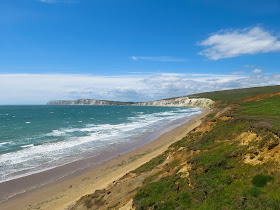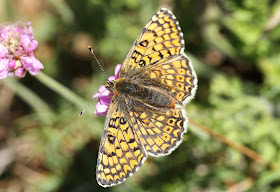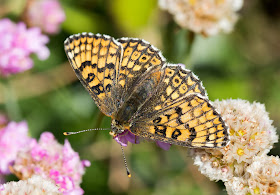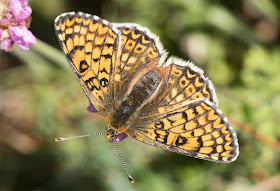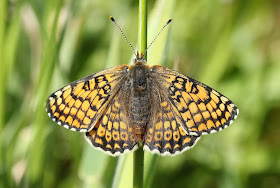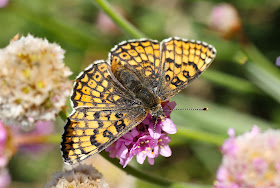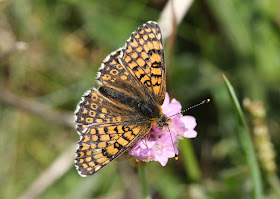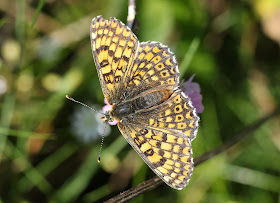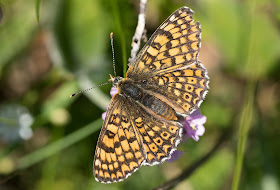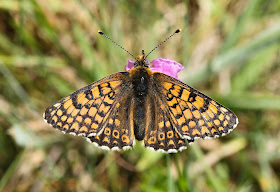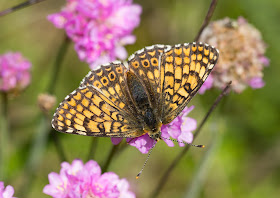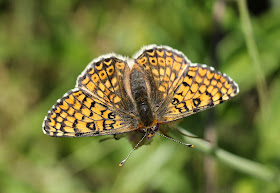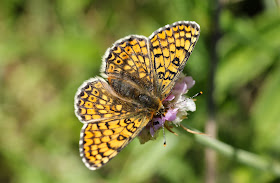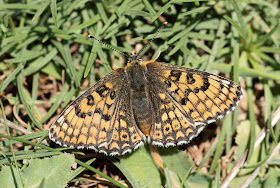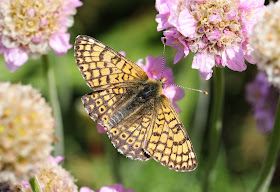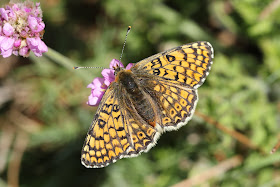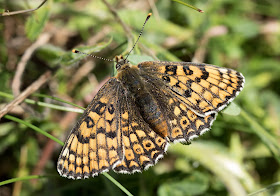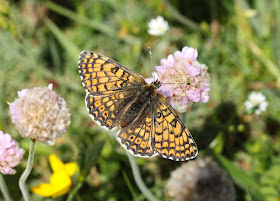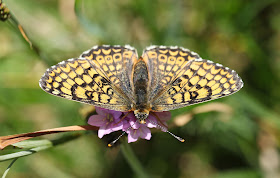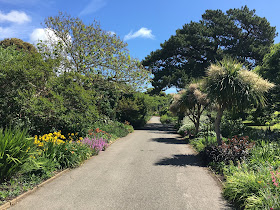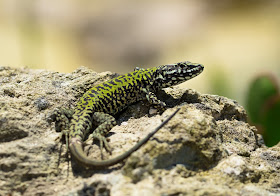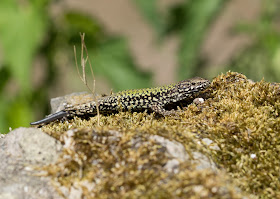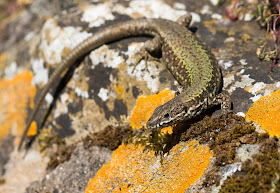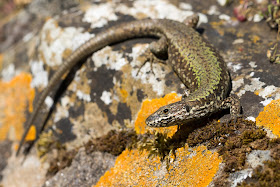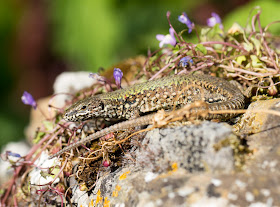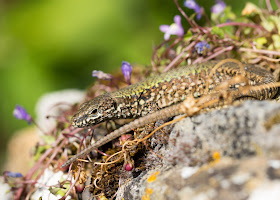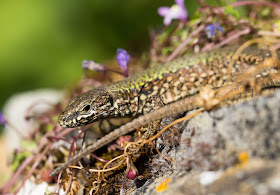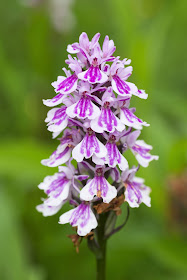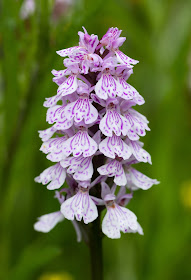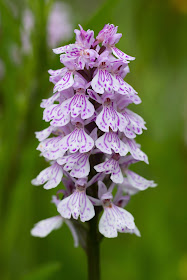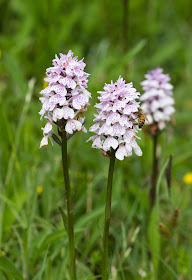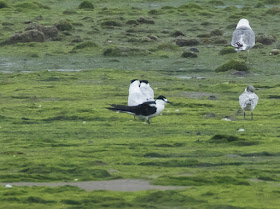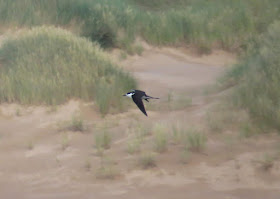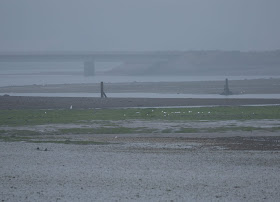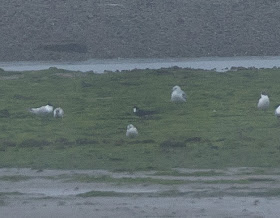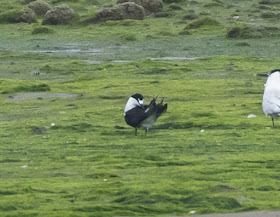With beautiful weather forecast for the south coast at the beginning of June last summer, I made the snap decision to take us down to the Isle of Wight in an effort to track down one of our most localised British butterflies – the Glanville Fritillary. Traditionally restricted in distribution to the southern coastal headlands on the picturesque Isle of Wight, I’d never yet had the opportunity to track down this orange-clad winged wonder, and with a day off work on the Friday it was the perfect opportunity to make a long weekend of it.
 |
| Glanville Fritillary |
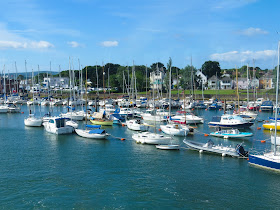 |
| The view from the ferry |
With our first site of The National Trust’s Hanover Point just a short drive from the ferry terminal, we were soon exploring the coastal paths on the edge of the cliffs for our target, quickly spotting two fellow Lepidopterists searching at the base of the path where we were heading. Noticing something small and orange near to where they were kneeling, sure enough, we soon had our first glimpse of the delicate Glanville Fritillary.
Much smaller and daintier than I had expected and feeding on one of the coastal flowers nestled beneath the cliffs, we had soon located a handful more of these charismatic beauties, bounding powerfully across the vegetation before settling to bask, wings spread wide on the parched earth. Following a tip off from our fellow Glanville hunters, we headed up in to a small sun trapped valley on the side of the cliffs over on a grassy path, where sure enough, a group of around 6 or 8 individuals were feeding and flitting around the lilac coloured thrift – a seemingly favourite nectar source.
Over the course of the next three hours we spent an enjoyable afternoon tracking our orange-checked targets, taking advantage of some individuals’ tolerant nature to get an exceptionally close look, while getting thwarted by several others’ flighty tendencies!
Named after Lady Eleanor Glanville, a 17thC Lepidopterist who first discovered the species in Lincolnshire, Glanville Fritillaries are sadly now mostly confined to the Isle of Wight, restricted to the southern coastal headlands where they occur in good numbers. The population on the Isle of Wight fluctuates wildly year on year, with some seasons seeing very few individuals while other years enjoy a particular boom in numbers. Whether this is down to the weather conditions or due to a particular parasite is not clear, but numbers on the whole have declined substantially over the last 30 years and Glanville Fritiallaries are now seen as vulnerable in Britain.
Pleased with our close-up encounters and with our car park ticket due to expire any second, after fuelling up on ice cream we checked out a nearby site off the A3055 for Adonis and Small Blues, but with the wind now having picked up substantially there was very little butterfly activity on the slope, a lone Dingy Skipper and a battered Green Hairstreak the only indication of the many other butterfly treasures lurking out of sight.
After an overnight stop at the delightful Kenbury B&B in Shanklin on the eastern side of the island and a delicious meal of redcurrant duck and garlic buttered chicken just hitting the spot after a long day in the field, we had just enough time on the Sunday morning to visit Ventnor Botanic Garden on the hunt for the brightly coloured and quirky Wall Lizard.
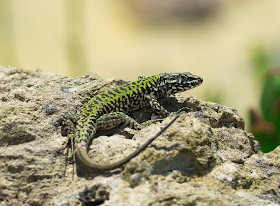 |
| Wall Lizard! |
Favouring areas that had spots of vegetation in to which the Wall Lizards could run in to cover, we were able to get great views as they basked (in-between instances when curious and intrigued fellow visitors to the garden got a little too close for comfort to them!)
With our time on the Isle of Wight coming to a close and getting back to the mainland for lunch, we had just enough time to check out Soton Common (just outside Southampton) where a population of Dactylorhiza orchids hold several monochromatic individuals. Sadly on this occasion many of the plants had gone over (they appeared to be a hybrid mix of Common and Heath Spotted Orchids) and we at least couldn’t spot any of the full monochromatic flowers that have occurred here in previous years. We did however spot several that displayed some monochromatic traits (with a predominantly pink lip), while the Heath/Common Spotted Orchids that were still in flower were also nice to see.
 |
| Partial monochromatic Common Spotted Orchid - note the darker colouration on the lips) |
